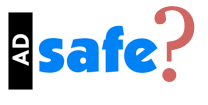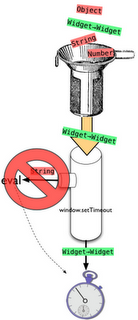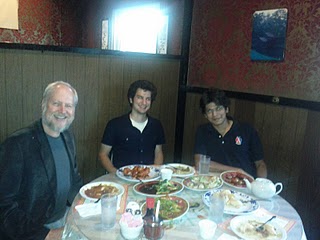ADsafety
Tags: Browsers, JavaScript, Programming Languages, Security, Types, Verification
Posted on 13 September 2011.
A mashup is a webpage that mixes and mashes content from various sources. Facebook apps, Google gadgets, and various websites with embedded maps are obvious examples of mashups. However, there is an even more pervasive use case of mashups on the Web. Any webpage that displays third-party ads is a mashup. It's well known that third-party content can include third-party cookies; your browser can even block these if you're concerned about "tracking cookies". However, third party content can also include third-party JavaScript that can do all sorts of wonderful and malicious things (just some examples).
Is it possible to safely embed untrusted JavaScript on a page? Google Caja, Microsoft Web Sandbox, and ADsafe are language-based Web sandboxes that try to do so. Language-based sandboxing is a programming language technique that restricts untrusted code using static and runtime checks and rewriting potential dangerous calls to safe, trusted functions.
Sandboxing JavaScript, with all its corner cases, is particularly hard. A
single bug can easily break the entire sandboxing system. JavaScript sandboxes
do not clearly state their intended guarantees, nor do they clearly argue why
they are safe. 
Verifying Web Sandboxes
A year ago, we embarked on a project to verify ADsafe, Douglas Crockford's Web sandbox. ADsafe is admittedly the simplest of the aforementioned sandboxes. But, we were also after the shrimp bounty that Doug offers for sandbox-breaking bugs:
Write a program [...] that calls the alert function when run on any browser. If the program produces no errors when linted with the ADsafe option, then I will buy you a plate of shrimp. (link)A year later, we've produced a USENIX Security paper on our work, which we presented in San Francisco in August. The paper discusses the many common techniques employed by Web sandboxes and discusses the intricacies of their implementations. (TLDR: JavaScript and the DOM are really hard.) Focusing on ADsafe, it precisely states what ADsafety actually means. The meat of the paper is our approach to verifying ADsafe using types. Our verification leverages our earlier work on semantics and types for JavaScript, and also introduces some new techniques:
- Check out the ★s and ☠s in our object types; we use them to type-check "scripty" features of JavaScript. ☠ marks a field as "banned" and ★ specifies the type of all other fields.
- We also characterize JSLint as a type-checker. The Widget type presented in the paper specifies, in 20 lines, the syntactic restrictions of JSLint's ADsafety checks.
Unlike conventional type systems, ours does not prevent runtime errors. After all, stuck programs are safe because they trivially don't execute any code. If you think type systems only catch "method not found" errors, you should have a look at ours.
We found bugs in both ADsafe and JSLint that manifested as type errors. We reported all of them and they were promptly fixed by Doug Crockford. A big thank you to Doug for his encouragement, for answering our many questions, and for buying us every type of shrimp dish in the house.

Learn more about ADsafety! Check out:
- The paper, code, and proofs;
- Video of Arjun presenting at USENIX Security;
- ADsafe and JSLint.
